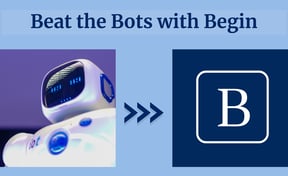Resume vs CV vs Biodata | BEGIN
Many people confuse resumes with CVs and biodata. The three of them serve completely purposes. A resume is made when you want to apply for a job, a CV or a Curriculum Vitae is made for academic purposes, and a Biodata is made for personal purposes. The common point between these three documents is that they are self-marketing tactics for the targeted audience.
Biodata would be the most informal document out of all the three. So let us first understand what a biodata is and get it out of the way.
Biodata
A biodata is typically a document that highlights several factual data about a person. These include name, age, color, height, skills, date of birth, hobbies, etc. A biodata states more personal information rather than professional information.
In countries like India, a biodata is usually made for a person entering the arranged marriage setting. It provides information about an individual which would help to determine if that person would be a good marriage match. It is made for personal purposes and it is tailored as per needs. There is no specific format to follow. Many biodatas attach the photograph of the person also. Educational qualifications and work experience are added in the biodata for showing what that person has done and it is not for job purposes.
What to include in a biodata?
Name, date of birth, place
Educational Qualifications
Work Experience
Family Details
Residential address
Phone number
Photograph of the person
Curriculum Vitae
A Curriculum Vitae or CV is a document used for academic purposes. Curriculum Vitae is originally a Latin word that means “course of life”. A CV is an in-depth document that details the entire career. It can range from two-three pages and can even be 10+ pages long. No accomplishment, achievement, or award can be ignored in a CV.
It is written plainly, in detail, and in a comprehensive text. There is no need to use bullet points or fancy graphical templates. It is a step-by-step guide to your entire career and includes all sorts of personal information.
What to include in a CV?
Contact Information
Research Objective, Personal Profile, or Personal Statement
Education
Professional Academic Appointments
Books
Book Chapters
Peer-Reviewed Publications
Other Publications
Awards and Honours
Grants and Fellowships
Conferences
Teaching Experience
Research Experience/ Lab Experience/ Graduate Fieldwork
Non-Academic Activities
Languages and Skills
Memberships
References
Resume
The resume word is derived from the French word which means “to sum up”. It is a short, concise document highlighting key relevant skills for the job opening. It should be made with the relevant job opening in mind. Most of the time, all the information on the resume can be written in one page. But if you have 15+ years of experience and extra information that you want to add then you can have a second page.
What to include in a resume?
Contact information including Job Title
Resume Summary or Resume Objective
Work Experience
Education
Skills
Additional Sections (Awards, Courses, Resume Publications, Licenses and Certifications, Interests, Languages, etc.)
Difference between resume and CV
CV has no length limit
CV details the course of entire career
Used for academic purposes
Resume should be one or two pages long
Resume highlights key points details that is relevant to the job opening
Used for applying for jobs
The differences between a CV and a resume apply only in the United States of America. In all of Europe, CV is used as a synonym for a resume.
I hope that this article has solved your query about the differences between a resume, a CV, and a biodata.












